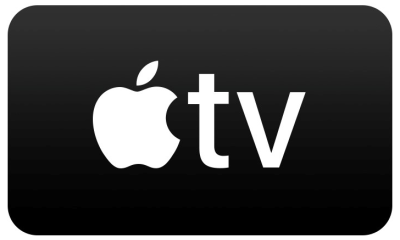 |
Dressing Up Howard Burden is the man who put Lister in leather and gave the Cat his most glorious suits. With his scissors out and his fabric chalk poised, Howard settles down for a chat with the penguin who only ever needed a bow-tie. |

Andrew Ellard
Mr Flibble felt decidedly under-dressed as he whispered his first question to Andrew, who dutifully passed it on: Do you have a specific way of APPROACHING NEW MATERIAL?
Absolutely. First I'll take the script - in whatever form, invariably scripts will change once we start - but I'll take the script and do a breakdown, work out the logistics. If there's a scene where Lister's going to get covered in custard, I know I've got to have at least doubles, if not trebles. If there's a scene of Cat jumping off a 40 foot ladder, then I've got to consider that we've got to have a stuntman, so I've got to duplicate that costume.
Everything's shot out of sequence. We'll have a scene were Lister will come in covered in custard, then we'll have the scene where he's about to be covered in custard! So I work out my logistics and the things that will be needed. Quite often that's where the springboard will come.
You then sit down with Ed and Doug and talk to them about how they visualise certain things. They're always very good, because they do trust me enough to give me quite a free rein, certainly on the boys. But when there are new characters or new guest artists, then obviously that has to be discussed at length.
So I'll take that on board and try to do some visuals, some costume sketches for that character. Once approval is in on that, I have to go and sample for fabrics. For instance, for the Canaries, we found a particular fabric that had a sort of fluorescent quality to it. It's a question of finding, sourcing, the amount of stuff we're going to need.
Then you go into the manufacture of the costumes which involves fittings, various discussions, more fittings, etc. etc. The process is on-going. The fascinating thing for me is that I can take a line in the script, or a character, and develop it from nothing. That's my chief input, that's where I really get a kick out of [it].
For example, the disease with Mr Flibble. Bizarre - it was pantomime! But it was funny and it got a huge laugh. Things like Kryten's groinal attachment. It was my idea to use the long hose extension. He attached this section and was vacuuming up, and I think Doug very kindly said, at one stage, that it's probably the biggest laugh Red Dwarf has ever had. That's nice.

What were the philosophies behind the CHARACTERS' costumes?
It was taking elements of each of the four main characters - of course we had Holly, but the four main characters who wear clothes (laughs) - and taking what their characters were about. Lister was this slob, never washed - although it's amazing how he's cleaned up over the series. Taking that slob element and the fact that they'd been in space for this period of time. I was trying to make his [outfit based on the idea] that he'd been adding bits on, patching it up, it was quite robust. He'd got rid of the uniform. There is some sort of art school thing [in his past].
We actually customised his jacket, and there were a lot of hand-painted designs on it. Initially, on the first jacket that he had, I had Wilma Flintstone, on a rocket, on the back. And it was one of the things that Rob and Doug were worried about, that he'd have Wilma Flitstone looking voluptuous. So she was put in a spacesuit.
I wanted to bring off the military aspect of Rimmer, that he was anal and so starchy - completely the opposite of Lister. It was quite difficult to get this uniform idea without going down the conventional 'short, tie' thing. So we went for this futuristic tunic and boots... and he did have a peaked hat at one point.
The Cat had already established a kind of 'zoot suit' persona, but I think at that time it had become slightly clichéd. I wanted to make him totally exotic, totally over the top, more flamboyant. All the Cat's dialogue is about the colour and the texture and the fabric and the feel, blah, blah, blah. Where he gets it from, nobody knows - his wardrobe must be warehouses full of stuff! (Laughs) The Cat was probably the easiest.
The most difficult was Kryten. He had been in series II, a one-off [episode], in a butler outfit. That was fine, but I just took the face-value fact that he's a mechanoid. I wanted him to be as metal as possible. We've tried over the years to develop Kryten - his nude suit in series VIII. We actually tried that in series III, but series VIII was the first time we got to show it.
I like the idea that his metal is some fabulous component metal that nobody has heard of, that's titanium-based but very pliable, and if you peeled it off he's exactly the same underneath! (Laughs)

Meanwhile Holly, despite being only a head, does actually get a costume budget...
Holly's had the odd hat, a tiara. Hattie was delighted when she had a role in Dimension Jump, the fact that she could show her legs. As with Norman, I do have a costume budget [for them] - they get a very nice sweater, a nice pair of gloves. They very rarely get to dress up.
Mr Flibble started mumbling about only ever being given a lousy bow-tie, but Andrew clamped his beak. There seems to be constant REINVENTING - are you and the writers restless?
I don't think you can ever rest on your laurels. An audience that has grown up with Red Dwarf is now experiencing the most fantastic technology on every level. Things have to move on. I think if you stay put, then you're becoming a bit nostalgic. It's good to change, it's good to move, it keeps things a bit more exciting.
It helps the artists with their characters, to move on a leap, to have something to come back to. Like series VIII, to go back to basically series I. It's important to me to take the series on, to make it better, to improve things on the last series. Kryten's always being updated for ease of movement.
The danger with Dwarf is that it gets so sophisticated that it loses its base elements, its comedy. You could run the risk of losing elements of that if it became too sophisticated. But it's gently rolling along.

Some costumes seem to come out of the situation - in RD VI the CAT had a one-piece PVC thing with changing jackets, all because of low supplies...
It was something that just worked so well for him. It suddenly streamlined a look, but it retained all the elements of the Cat. We'd gone through the extravagance. There's a lot more to do now, and if you put an actor in a great big costume with coats and spangly gloves then they're quite cumbersome.
A lot of that [series] they were spending in Starbug, going up and down ladders and along gantrys - and he'd wedge! (Laughs) He'd get stuck. It pared down a look for him. It'll be interesting to see how the Cat develops now. I have ideas. We'll see what happens.
We had a lot of discussions about the Cat and his prison uniform. We could have gone for the idea of him having a spangly prison uniform, or a lurex Canary outfit with diamonte and stuff. But the whole point of that, I think, was that mannerisms sell the Cat. He doesn't need to be spangly. I think, when they're in prison, it's even more outrageous that he should be in a boiler suit. (Laughs)
There were subtle twists. The Cat's canary outfit did have a gold T-shirt while everybody else's was yellow. Very subtle, and hardly anyone knew - and, in fact, you wouldn't have known by the end of the series because all the gold had washed out! (Laughs)

Mr Flibble seemed to recall that his tie had originally been used in Casualty in 1989. Have you ever RECYCLED things?
All the time, every series! I have, in storage, everything from series III. Every year stuff will come out and be reused. The classic example is the Cat's first zebra coat, which we then used in the fifth series dyed yellow... Actually we didn't dye it yellow, we got a lot of felt pens and coloured it in! (Laughs) It seemed to work. The fabric wouldn't dye very well, so we got these special marker pens. I think it took two and a half days, with three of us penning in this jacket.
When alternate Kryten came in, Gordon Kennedy [Hudzen], we literally made his costume out of everything and anything - overnight. It was a last-minute script change. I used a helmet for him - you just see him take it off - and that helmet was used as a mould for the guards on floor 13. Not a lot of people know that.
Moving on, how did you get involved with MOVIES?
Young Americans was my first film. I'd done a lot of television work, but I was approached to work with first-time writer-director Danny Cannon. It was a very low budget film. I was interviewed three or four times. It was possibly one of the hardest jobs because we had no money at all and it had to look good.
I then did another series of Dwarf, and it was during that I got Shopping. Another youth culture, another first-time writer-director, Paul Anderson. Both have gone on; they were whisked out to Hollywood - Danny to do Judge Dredd, Paul to Mortal Kombat, Event Horizon. Actually he tried to get me out to Hollywood to do Mortal Kombat; we couldn't get the green card.
The only other piece of SF you're known for is the present-day alien drama INVASION: EARTH...
There was a science-fiction element to the storyline, but for me it was a military programme. It was RAF-based. The actual alien was a computer-generated presence - so it only affected me when they were covered in slime! (Laughs)
I worked very closely with the Ministry of Defence to get the clothes right. The thing about audiences is that they expect things to be right. I did a period drama called All The King's Men, with David Jason, and even now I get emails from somebody who wants to know about a particular medal ribbon.
THE SCARLET PIMPERNEL had a bit of a James Bond thing going on...
There were a lot of things in that - where he escapes with keys in the back of his collar, removing the heel of his boot to get out a pick... It was slightly tongue-in-cheek. That was what we wanted to bring - the humour. Particularly as we didn't have the disguise elements. It's nice, as a designer, when you can contribute something to the finished piece that will make people laugh or make them think. Then you feel like you are part of it.
People try to compartmentalise [you]: 'Oh, you do period things'. So to do Red Dwarf and The Railway Children and All The King's Men and The Scarlet Pimpernel, and modern-day drama - I did A Christmas Carol with Ross Kemp - is great. Every job has the same process. You are visualising for the director. I'd like to move more towards features at the moment. I did a film called War Brides with Anna Friel, a 1940s drama, and it was a fabulous script. It's freedom of choice. War Brides is on release in March.
I've just finished a contemporary drama with Jemma Redgrave and Michael Maloney called The Swap. I hope to be doing a film with Rupert Everett and Peter O'Toole which is shooting in Puerto Rico.
We recently spoke to Jenny Agutter, who you worked with on the most recent Railway Children adaptation...
I'd worked with the producer before, on a TV series called Roughnecks about oil riggers on the North Sea, and he approached me. I remembered watching The Railway Children, and funnily enough, my mother was going to send me the video, and I said, 'No, don't'. Because it would just be fatal. I need to take the E. Nesbit story. We weren't remaking The Railway Children, we were doing a re-interpretation of the story.
When I first spoke to Jenny, I told her we'd worked together on Red Dwarf when she was Professor Mamet. In her first [Railway Children] fitting, when she was being corseted, she did comment, 'No silver thigh-boots this time!' I said, 'No, not unless they're under your skirts...'
But she was lovely, I really enjoyed working with her. The good thing with Dwarf is that a lot of the guest stars - Frances Barber, Jane Horrocks - I've often worked with again.
Speaking of Jane Horrocks, Mr Flibble noticed that in Holoship her bosom was quite...significant. Whereas in Absolutely Fabulous she is famously played as flat-chested. What happened?
We had the technology! We had a little help there...
Mr Flibble enjoyed talking to Howard Burden, and now that it's over...Mr Flibble is very cross.














